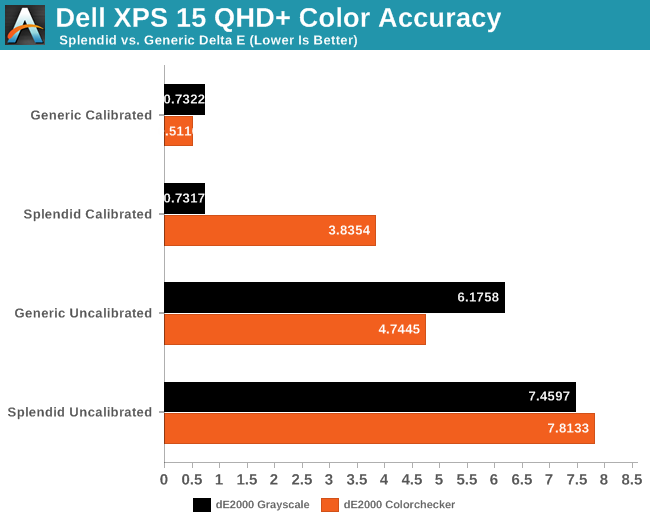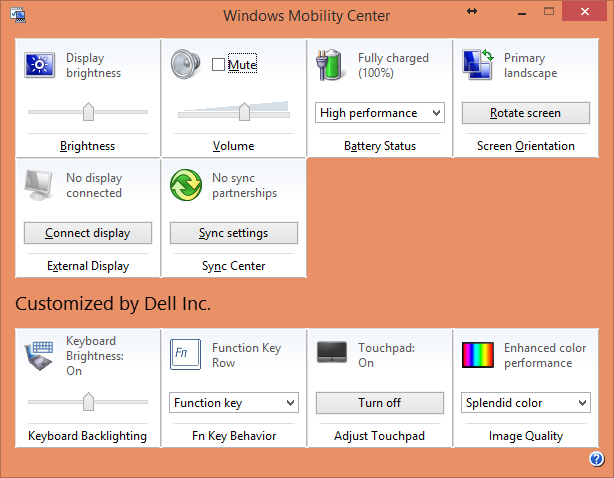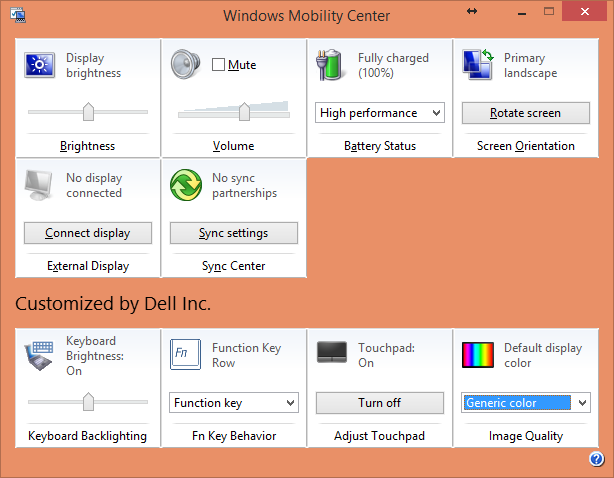Dell XPS 15 QHD+: Revisiting the LCD Results
by Jarred Walton on March 20, 2014 3:40 PM EST_678x452.JPG)
When I posted the review of the Dell XPS 15 last week, the display was one of the highlights, though not without problems. The biggest issue of course is dealing with the large number of Windows apps that don’t support the high DPI API; there’s not much to be done there other than to wait and let the application developers work things out – and they will, considering the number of high DPI displays coming down the pipe! The other issue was that the out-of-box colors weren’t all that great (oversaturated), and even after calibration there were still a few small quirks with the colors. Well, we received word from one of our readers that the problem with the colors can at least be partially fixed by disabling the “Splendid color" mode, so I set about retesting the display.
First things first, if you have this particular laptop and are wondering where Splendid mode is set, you have to go into the Windows Mobility Center. You can see the “Enhanced color performance” setting in the above images, which of course look the same on your display as the setting only changes my LCD’s LUTs (Look Up Tables) but trust me: they're not the same. Apparently Dell sets Splendid color mode initially, and unless you specifically go looking for the setting you’ll likely miss it – as I did. Here’s where things get a bit odd….
My initial results after calibration were quite good, even with the display being set to Splendid mode. Now I can’t reproduce those numbers. What I can reproduce is similar numbers with the display set to “Generic color” (within the Windows Mobility Center settings), but they’re actually better than before. As this is the first display I’ve tested with the new software/hardware, I’m still learning a few things, but if you have an XPS 15 with the QHD+ display and you can’t get the colors to look right, hopefully enabling the “Generic color” setting will help you out.
So how does the XPS 15 QHD+ panel perform with the Generic color profile compared to the Splendid profile? Here are the uncalibrated/calibrated results and charts from both modes, separated into four galleries.
As expected, the uncalibrated color accuracy on the Splendid mode is quite a bit worse than that of the generic color profile – Splendid clearly oversaturates certain colors. However, the main difference is that Splendid apparently kills the red levels where the other blue and green components are in some cases slightly better than the Generic profile. Overall, though, Splendid definitely isn’t what I would choose for proper colors. In general, the default colors in either mode aren’t that great, which is why we’d really like Dell (and others with these high-end panels) to factory calibrate. Let’s move on to the calibrated colors, though….
And there’s what we were hoping for. The calibrated colors on the XPS 15 QHD+ panel were good before, but now they’re nearly perfect. What’s more, by going back to the calibration I have consistently been unable to recreate the earlier calibrated Splendid results. My best guess is that perhaps the unit I’m testing this on somehow had the Splendid profile modified so that it was more like the Generic mode, but after a full DCC reset I get the above results. And what they show is that even with calibration, I’m unable to fully correct the problems with oversaturated reds, and that throws some of the other colors off as well. Here's a quick summary of the average Delta E for the grayscale and Colorchecker charts.

Long story short, then: if you want better colors on the Dell XPS 15, use the Generic color profile. Pre-calibration it’s at least better than average, and post-calibration all of the tested points are below 2.0 dE, with the average being below 1.0 – essentially perfect. If Dell – or someone else – can deliver a laptop with that sort of color accuracy out of the box, we’d definitely be talking about Editors’ Choice material – for the display if not for the laptop as a whole. For imaging professionals, the combination of a high DPI PPS (like IPS) panel (e.g. “future proof”) that calibrates to nearly perfect colors is the best we have ever tested. Worst-case, you can run the panel at 1080p with 100% scaling and wait for the apps to properly support high DPI; best case, you could run QHD+ resolution and have even more screen real estate to work on editing videos, photos, etc.




































33 Comments
View All Comments
Rexyl - Friday, March 21, 2014 - link
Thanks for the post Solandri! This helps me out a lot. I'll be doing some more looking this weekend.Albino Digits - Wednesday, June 11, 2014 - link
I know I'm just seeing this three months later, but that is a super informative comment, Solandri. Thanks!jphughan - Thursday, March 20, 2014 - link
A few extra notes about the splendid mode control in Windows Mobility Center since it can be a bit "shy". First, you need to have Dell Quickset installed in order to have that option in Mobility Center. Second, Windows needs to boot with that display enabled, so if you have an external display connected and your display configuration has your built-in panel disabled in that setup, you won't see splendid mode in Mobility Center even after you enable the built-in display; you have to restart in a way that has the built-in panel enabled right from startup. And third, some customers who have had their motherboards replaced have noticed this option missing despite the above two conditions being met. It turns out the fix it to start your machine ONCE with the BIOS set for Secure Boot disabled and Legacy Option ROMs enabled. Once you've done that, it will reappear, at which point, you can switch those options back to their previous settings and it will continue to stick around.jphughan - Thursday, March 20, 2014 - link
I'm all over that thread (under the same nickname) and while yes there are a disappointingly high number of issues with this system, keep in mind that people on forums are generally more likely to be there about issues and problems rather than to post that everything is fine. I have coil whine on my system, but I've had it on all of my previous laptops that used high-wattage power supplies, so I didn't even consider it an issue until so many people complained -- but other than that my system has been absolutely flawless. I suspect that despite the indications on the forums, I'm in the majority. It's just that the people who are annoyed tend to be much more vocal. Not an excuse for QC problems, especially those who have had repeated issues, but that's not an indication that the majority of people getting these systems are having problems.Wally Simmonds - Thursday, March 20, 2014 - link
I've also got one of these laptops and very happy with it - got it from the DFO for 1600 AU for the mid spec. No coil whine, and the screen out of the box is great for me.I've traditionally been a Lenovo man, so the only thing I miss really is the trackpoint - everything else has been great.
Tujan - Thursday, March 20, 2014 - link
Of course you have to have the Display color calibrated . But as for the PPI among the applications. I'm just wondering the reason "CTRL+C" doesn't just do it for you.Tujan - Thursday, March 20, 2014 - link
edit: "CTRL + " doesn't do it for you.jphughan - Friday, March 21, 2014 - link
Several reasons: One is that not all applications support zooming in that fashion. Another is that even if it does support zooming, you're not actually getting sharper graphics, just larger -- which defeats the point of having a HiDPI display. And third, some applications would best be designed to scale only certain parts of their UI. For example, with Photoshop you would want the toolbars and controls scaled up to be legible, but you would NOT want the image itself to be scaled; that would still be rendered with a 1:1 pixel mapping in order to take advantage of the increased DPI.Tujan - Friday, March 28, 2014 - link
Yeai know. All you need is programing for everything you just listed. Either with controls within the applications themselves. Or something to have 'independent resolutions'within the applications. Given the monitor could do so. Anything other than doing a larger DPI (system wide). Or actually setting the overal resolution. Or doing yourself an unfavor,by increasing the Font sizes,and draining the printer ink for your run to the store.Gigaplex - Thursday, March 20, 2014 - link
Why is your comment a direct copy/paste extract from someone hfm's comment, with a shortened link that goes to an unrelated product on Amazon?